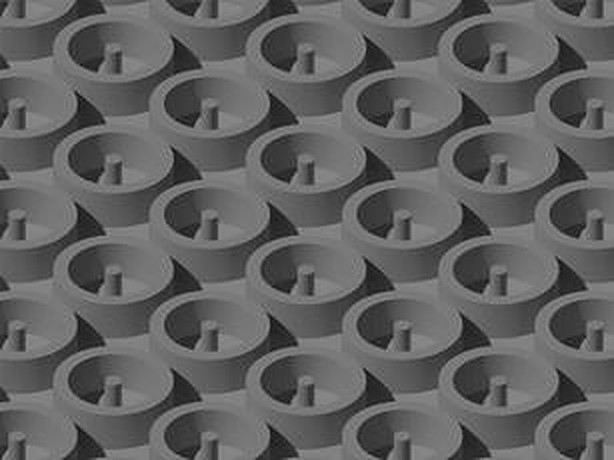A group of scientists from the Northwestern Polytechnical University in China has designed a broadband surface relief subwavelength optical anti-reflective (AR) structure aimed at improving light harvesting in thin-film crystalline solar cells.
The device is claimed to have a weighted average reflectance of 4.2% over the 400–1100 nm spectral range, which the researchers said is almost an order of magnitude reduction compared with a bare silicon surface, and to be able to increase the short-circuit current of a 3 μm three-layer thick thin-film silicon solar cell by over 50%.
The structure consists of a two-dimensional (2D) array of rings and pillars. “It is a periodic structure that can be integrated onto the surface of the top silicon layer of solar cells,” they explained. “To minimize the reflection over a wide wavelength range, it is crucial to find the optimum geometric parameters of the subwavelength AR structure.”
The electromagnetic response of the device was simulated through commercially available finite-difference time-domain (FDTD) tools, which are commonly used for modeling computational electrodynamics. As a light source, a broadband (400–1100 nm) plane wave with a varying angle of incidence to the substrate was used and the typical optical dispersion property of silicon was also considered in the simulation.
Popular content
According to the research group's calculations, the AR structure would be able to increase the solar cell short-circuit current to 28.6 mA/cm2, which would be 53% more than that of a reference cell without the AR device. “Our simulations show that the averaged reflectance, weighted with the AM1.5 solar spectrum in the 400–1100 nm spectral range, can be reduced from 35% down to only 4.2%,” it concluded. “Besides, we show that the subwavelength AR structures are robust to certain degrees of fabrication errors.”
The anti-reflective tech is introduced in the paper Design of a Highly Efficient Subwavelength Antireflective Structure for Solar Cells, published in the International Journal of Optics.
This content is protected by copyright and may not be reused. If you want to cooperate with us and would like to reuse some of our content, please contact: editors@pv-magazine.com.



1 comment
By submitting this form you agree to pv magazine using your data for the purposes of publishing your comment.
Your personal data will only be disclosed or otherwise transmitted to third parties for the purposes of spam filtering or if this is necessary for technical maintenance of the website. Any other transfer to third parties will not take place unless this is justified on the basis of applicable data protection regulations or if pv magazine is legally obliged to do so.
You may revoke this consent at any time with effect for the future, in which case your personal data will be deleted immediately. Otherwise, your data will be deleted if pv magazine has processed your request or the purpose of data storage is fulfilled.
Further information on data privacy can be found in our Data Protection Policy.